#so I love the fact that the scientists examining vampirism are vampires themselves
Text
Unpopular opinion apparently but Prince Lestat and The Realms of Atlantis was a lot of fun
#the vampire chronicles#tvc#prince lestat#prince lestat and the realms of atlantis#my meta#look she brought in aliens and included more science and I loved it#I love the way she has characters examine vampirism from a scientific pov#that's really rare#tvd did it a bit#but the doctors investigating it were evil#and the plotline was dropped once they were killed off#so I love the fact that the scientists examining vampirism are vampires themselves#and just want to understand#to help others#and do no harm
7 notes
·
View notes
Text
A Series on Series 04: Deborah Harkness’ All Souls Trilogy: A Discovery of Witches/Season 1

Hi! I’m Alex, a YouTube Newbie and this is The Late Lockdown List where I talk about the list of things I’ve got on my mind since the lockdown started.
Today, on the fourth episode of A Series on Series, I’ll be talking about Deborah Harkness’ All Souls Trilogy, starting with the first book, A Discovery of Witches
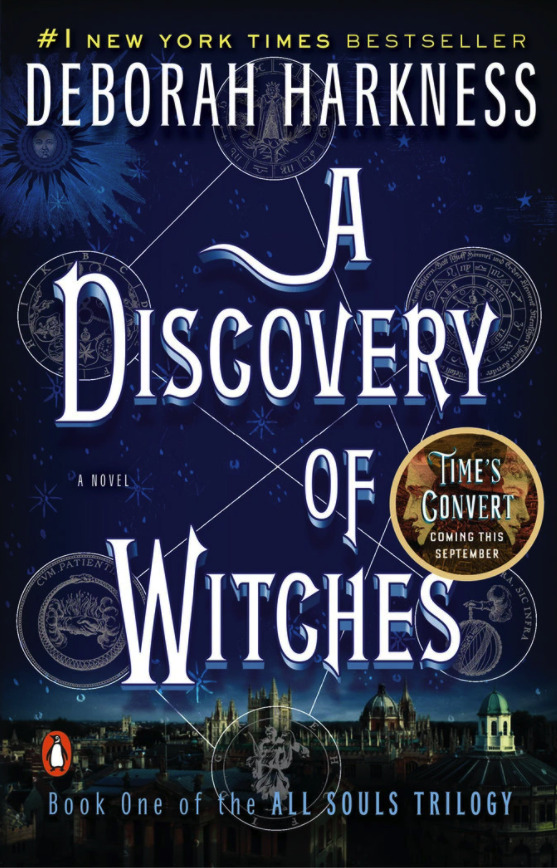
and the basis of the season 1 of the TV series.

Let’s dive a little bit into it.
Why is it called the ‘All Souls Trilogy’?
I could do research, but having read the entire series, I think it’s because the male lead, Matthew Clairmont or Matthew de Clermont, in the book belongs to the All Souls College at Oxford University.
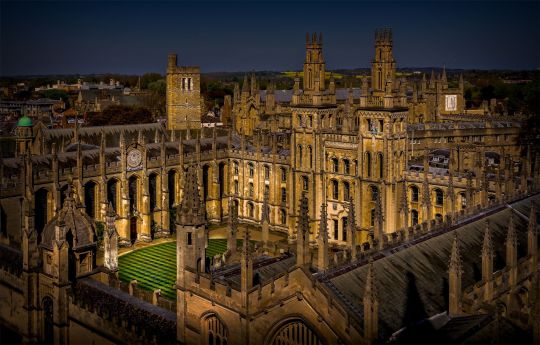
A bit of trivia: All Souls College does not have undergraduate members, and it’s unique in the sense that all members automatically become fellows -- full members of the college’s governing body. The examination for the fellowship has once been described as ‘the hardest exam in the world.”
If you’re not familiar with the book or the TV series, just know that there are going to be a lot of spoilers. With that out of the way, first a primer:
The two main characters here are Diana Bishop

-- a Yale historian, visiting scholar at Oxford (where she also got her PhD) and reluctant witch.
She’s the daughter of two very powerful witches,
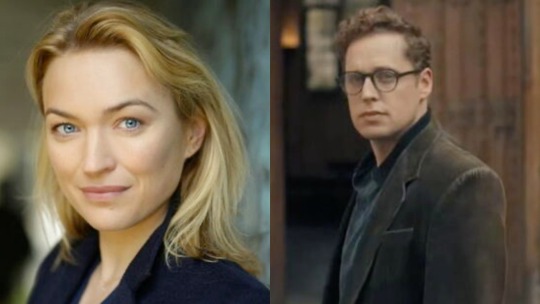
but due to the tragic death of her parents she’s shied away from witchcraft and very seldom uses her power, if at all. After her parents’ death, she was raised by her maternal aunt Sarah and her partner Emily who are both witches.

They tried to teach her, but Diana’s grief at her parents’ death caused her to all but reject magic.
Then we have Matthew Clairmont (aka Matthew de Clermont of the powerful vampire de Clermont family, aka Matthew Roydon), a geneticist, All Souls College fellow and 1,500-year-old vampire.
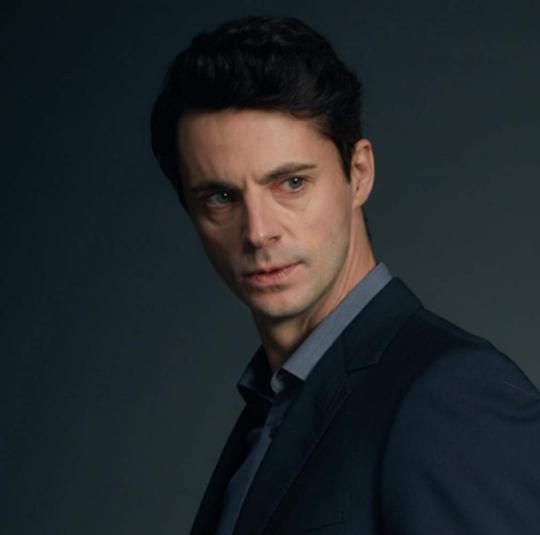
There are creatures in this series: daemons, vampires and witches. They’re not HUMAN. That’s why they call themselves ‘creatures’ -- to differentiate themselves from us. Daemons

are blessed with creativity and cursed with madness.
Vampires

are -- well, the usual kind that we’re familiar with. Here, though, they mate for life, like wolves.
Witches
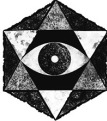
have magic -- different kinds like time walking, precognition, flight, transmogrification, telekinesis, witchwind, witchfire, witchwater, and manipulation of the elements.
Basically, if you’re familiar with Harry Potter and Twilight, then you know what witches and vampires are. Speaking of the whole Harry Potter and Twilight thing, The New York Times calls this the ‘Harry Potter for grownups’

and NPR calls it ‘Twilight for the intellectually restless.’
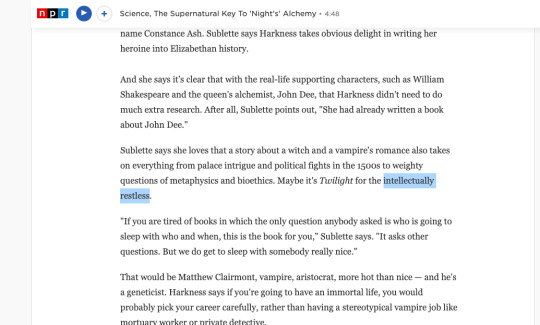
Make of that what you will.
For me, I don’t compare this with the other two. I think it stands very separately from those. Since this is written by an historian, the approach is markedly different. It’s well-researched -- as are most historical romance novels -- because it does deal with a certain time period.
What I love about this -- and you’ll be hearing this from me a lot -- is the world building. I judge a book by the world it creates for me. I have to be able to LIVE in that world. And in most cases, I have to WANT to live in that world.
This is a world inhabited by creatures I’ve been fascinated with my entire life -- except for daemons. I did my first thesis on vampires -- let’s not talk about why it didn’t get accepted. It’s still a sore point for me even after so many years later. And as for witches, well… family tradition has it that my maternal great grandmother was a witch. In fact, growing up, I’d heard
whispers of her supplementing her income by being a ‘healer.’ I’m not sure how much of that is true but I like to believe that it is.
So vampires and witches, I’m sold. I can tolerate the daemons.
Another thing I love about this are the well-written characters. While I can’t actually relate to Diana Bishop, I don’t have to for me to like her. She just needs to be alive for me in the book. And she is very much so. I envy her graduate degrees -- I wish I had the discipline to obtain a PhD. And spending time at the Bodleian. *sigh*

Anyway, I can understand her rejection of magic. After all, in a way it’s what took her parents away from her. But I like how she was able to adjust when she realizes that she’s got this power -- which is far stronger than anyone thought it would be.
As for Matthew -- *sigh* -- I’m a sucker for vampires. Yes, I went there. I love him. He’s a scientist and he’s good with his hands. By that, I mean he used to be a stone mason so he can build things. What? I like a guy who’s handy.
I also like the love story. Matthew and Diana are equals -- in the sense that they are partners in the relationship. Of course, with Matthew having been alive for more than a millennia -- plus vampire, plus a guy, he has a tendency to be domineering, convinced that he’s doing all things to protect Diana. However, Diana is a POWERFUL witch. She’s a scholar, too. She can take care of herself. Matthew may be physically stronger, but Diana is a POWER. And as she grows into that, Matthew struggles to keep up as well curb his tendency to be overprotective. For the most part, they do keep this balance.
On to the differences of the book from the show:
Overall, the TV series was faithful to the book. Most of the scenes in TV series are in the book. The show is gorgeous. I love the architecture and just the overall mood. I think Teresa Palmer makes a good Diana, but I love Matthew Goode. Period. But he is very, very good as Matthew Clairmont.
I know Teresa Palmer is Australian and Diana Bishop is American so I’m not sure if it’s just me, but I do hear Teresa’s native accent here and there. It’s not distracting, but since I know that the one she uses for her character is not her original accent, I can’t help but hear the Australian one. Matthew Goode, on the other hand, is British, and Matthew Clairmont is as well. Well, for the last couple of centuries he is, but he’s originally French. But overall, I have no problem believing they’re really Diana and Matthew.
As for Gillian Chamberlain,
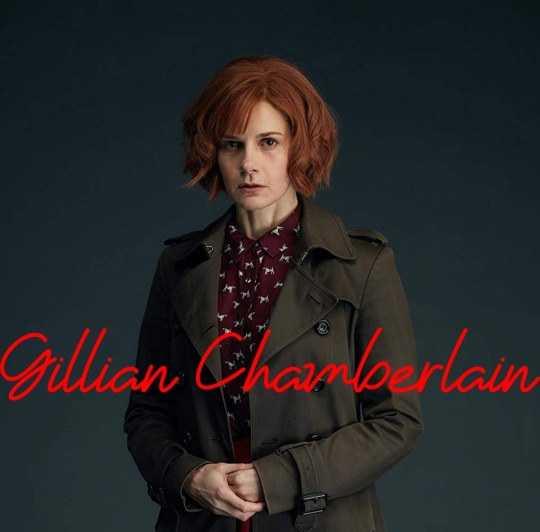
the other witch at Oxford who in the TV series is sort of Diana’s friend… in the book, they’re merely acquaintances. She’s played by Louise Brealey aka Molly Hooper in Sherlock.
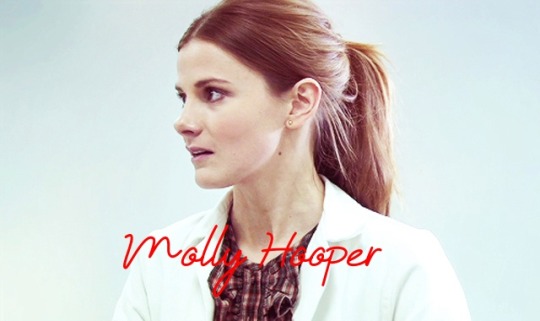
I love the actress and I love that I found Gillian both slightly annoying and a bit pathetic. Because in the book, she is. So I love that that’s how she’s also played in the series.
Then we have Aunt Sarah. When I saw Alex Kingston, my first thought was, “River!” If you don’t know, Alex Kingston played ‘River Song’ in Doctor Who.

And I loved her in that. So I knew I’d love her here, too. I do have the same ‘thing’ with her as with Teresa. Alex Kingston is British and here she plays an American. I can hear the accent. It’s not distracting, but it’s there.
And then there’s Peter Knox.
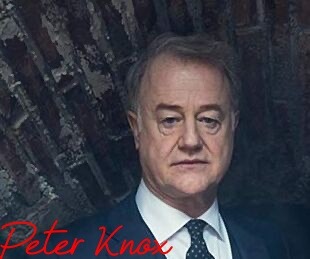
In the book, I found him arrogant, condescending and just a generally irritating person. In the series, he is more so. And the actor who plays him played Ser Alliser Thorne in ‘Game of Thrones.’
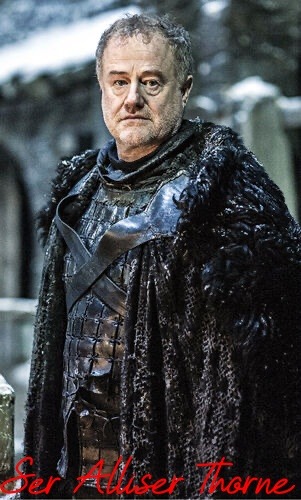
He was one of the Night’s Watch who tormented and had a hand, literally, in killing Jon Snow. But he got his comeuppance when he was hanged with the rest of the traitors. He was very convincing as a conniving SOB in GOT. And he is here, as well. In fact, he’s equal parts menacing and irritating. Which is a terrifying combination because if he’s just irritating, you can swat him away like a gnat. But because he’s menacing, you know you have to watch your back.
Satu Jarvinen
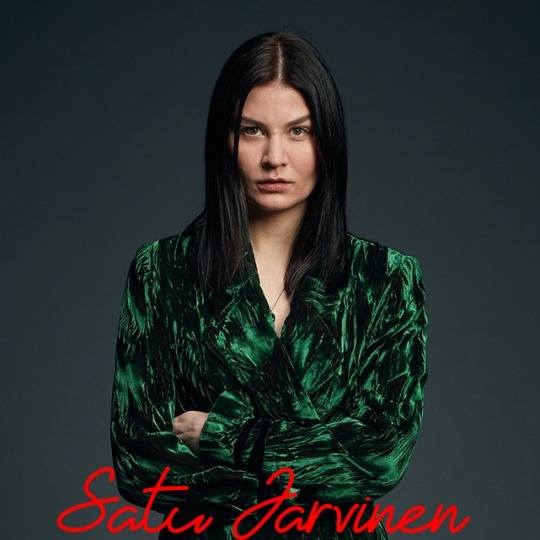
in the show is exactly how I thought she would look like when I read her in the book. In fact, the actress Malin Buska, infuses her with a somewhat edgy, emo attitude that really works. You can see why Satu and Peter work well because they seem to have something missing inside them that they think the other one has. It’s not a romantic connection -- more that of villains who don’t think they’re bad people.
And Ysabeau de Clermont.
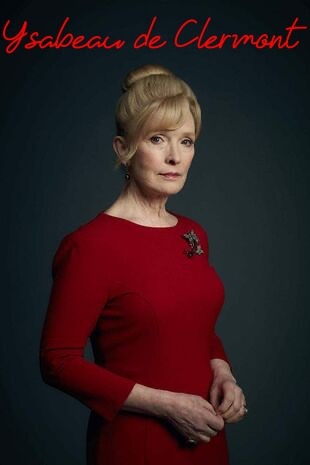
Lindsay Duncan plays her, who also played Lady Smallwood in Sherlock.

She does have the whole ‘lady of the manor’ aura -- both regal and frightening. I really liked how she snobbishly said how modern day witches are so uneducated -- all because Diana even with her post graduate degrees didn’t speak Occitan.

FAVORITE SCENES:
The rowing scenes:
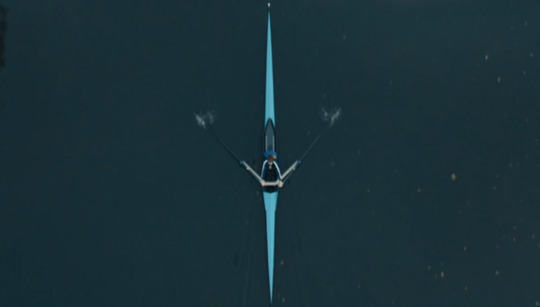
This is very self-serving because I like rowing. I haven’t had a lot of chances to row in the water. I bought a rowing machine at the start of the pandemic and actually did a few months of rowing for 20 minutes three times a week. Then I stopped. I can’t remember why. But I love the scenes of Diana rowing -- which she does to rid herself of excess energy caused by her power -- because I imagine rowing along the Thames myself.
Any time they’re in the Bodleian: I love libraries. I’ve loved them since I was a child. I loved them when I was in college. I was actually really excited that my university decided to extend the library hours on Fridays just so I could stay there and read to my heart’s content. Also, whenever I go to a foreign country, I always go to the national library.
This isn’t in the show, but in the book, but I love how everyone at the Bodleian scrambled to cater to Matthew when he went to the library. I liked how irritated Diana was that this guy took her spot… that they gave it to him solely on the basis of his being an All Souls fellow. In the TV series, they don’t really emphasize how much of a big shot Matthew is at Oxford.
I like how Matthew, when he was talking to his daemon friend, Hamish Osborne, was self-aware enough not to immediately think that Diana had the same feelings for him as he did for her. Since he’s a 1,500-year-old vampire who knew Charles Darwin, of course he’s a great resource for a history of science researcher.
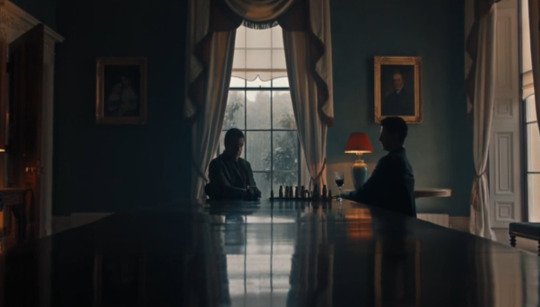
I love that part when Diana was trying to guess how old Matthew was and she asked, “Survived the fall of Carthage?” and he says, “Which fall of Carthage?” It was a playful exchange, and you can see that he was showing off a bit.

Sept-Tours:

literally ‘Seven Towers’ and is the current family home of the de Clermonts. It must be hell to heat, but as most of the residents are vampires, it shouldn’t be a problem. It’s beautiful and like Matthew, I would probably claim my own tower as well.
While it’s not my favorite scene, I think they did the part of Satu torturing Diana

-- in the pretext of trying to ‘open her up’ to see what her power is -- was done well. When I read that scene, I was wondering how much of it they were going to put in the book. So it was heartening to see that ‘horrifying’ scene there.

I’m not sure how I feel about the ‘instalove.’ You know that thing that sometimes happens where the leads just fall in love at first sight? In the series, it feels like it’s instalove. Diana and Matthew first meet at the Bodleian -- the day after Diana experiences the magic in Ashmole 782. It’s a book all creatures have been trying to find. Matthew, in particular, has been searching for it for more than a century. It’s thought to explain the origins of all creatures. Matthew is initially drawn to Diana because she is able to “call” the book.
Anyway, going back to the idea of ‘instalove,’ I mean, sure there was chemistry… but... In the books, their connection was fostered both by the time they spent with each other and their curiosity about Ashmole 782. I was more convinced in the book about that part than in the TV series. Or maybe it’s my deep-seated and sometimes difficult to conceal bias FOR the book versus its live action adaptation.
~
The Congregation: Secret island!

It’s actually on an island in Venice, concealed from humans. It has nine members, 3 from each supernatural race. And since the de Clermont patriarch established it, one of the rules is to always have a de Clermont on the Congregation. It was created during the Crusades as a self-regulating body for the creatures. Because most of the creatures abused their powers and abilities to influence outcomes during the Crusades, they attracted unwanted attention from humans. Ostensibly to keep the creatures safe from humans, the congregation agreed to several covenants: the main ones being that they must not interfere in human politics and religion and for creatures not to mix together, especially in terms of romantic relationships.
This is the covenant Diana and Matthew break. In fairness to Diana, she had no idea. She didn’t even know about the existence of The Congregation, much less the covenant. And so Matthew does this whole ‘noble idiot’ thing where he denies his feelings for her… but of course, in the end, they end up together.
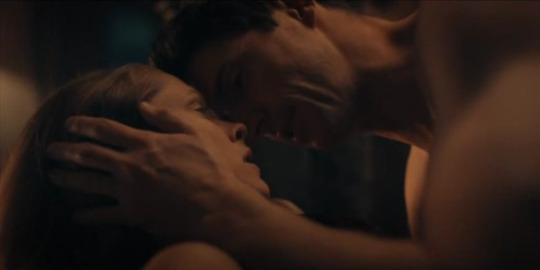
Moving on, the first book ends with Diana and Matthew going back to New York to Aunt Sarah’s and Aunt Em’s house. The original plan was for Diana to learn more about her magic from her witch aunts. The problem is that Diana’s magic isn’t the same as theirs. And they need someone to teach her so she can call the book again -- this time intentionally.
They’re joined by married daemons, Sophie and Nathaniel; two vampires: Marcus, Matthew’s vampire son, and Miriam, an ally of the de Clermonts and Matthew’s colleague at the lab, and Hamish. As there are now 3 witches (Sarah, Em and Diana), 3 vampires (including Matthew) and 3 demons, this is in effect a ‘coventicle’ -- this will be important later in the books.
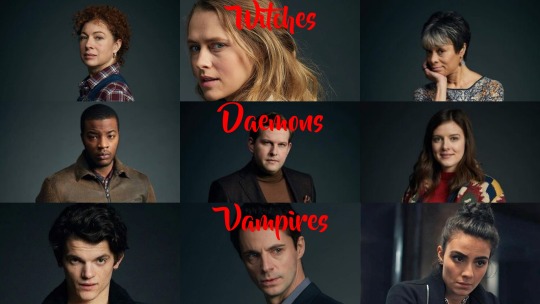
They’re all gathered there for different reasons: Sophie, because she’s meant to give Diana something that has been passed down in her family for generations (and one that’s needed for the timewalk, the vampires to update Matthew regarding their research (and I guess for moral support as well), and Hamish both because he’s Matthew’s best friend and lawyer (real world legalities must be observed before one undertakes a timewalk).
They leave for Sept Tour, which Matthew volunteered as their HQ of sorts, on Halloween. That night, Matthew and Diana are going to timewalk. And seconds before they could do so, Gerbert de Aurillac, Peter Knox and Satu Jarvinen arrive to stop them.

Of course, they don’t and we see our couple land somewhat shakily in 1590 London…
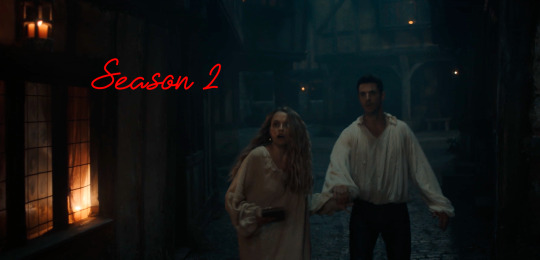
And the season ends there, setting us up for the next one and The Book of Shadows.
FINAL NOTE:
I LOVE IT!
Like I said earlier, it’s faithful to the book in the sense that I didn’t find anything that was off.
If you loved the books, I’m sure you’ll love the TV adaptation as well.
I was a little nervous that I wouldn’t love it as much. I’d been burned before, you see. (I’m looking at you, American Gods. Even Ian McShane and Orlando Jones’ Mr. Nancy couldn’t keep me hooked.)
However, I wasn’t disappointed in this one. There’s a lot to love here and I’m glad that there’s a second season -- and now they’re even done filming the third.
So that’s it for the first book and Season 1. Catch you in the next episode for The Book of Shadows and Season 2. Bye!
9 notes
·
View notes
Photo

The Hideous Sun Demon
Have you ever wondered what would be the exact opposite of a werewolf? Apparently writer/star Robert Clarke did, and as his answer, he made The Hideous Sun Demon. Nan Peterson from Girls Town is in it, and Patrick Whyte from Kitten with a Whip, and William White (no relation as far as I know) from The Human Duplicators. There’s a Rifftrack available, too, so this one is officially more than qualified.
We hit the ground running, as a man is wheeled into an ambulance after a nuclear accident. This guy turns out to be Dr. Gilbert McKenna, a scientist of some description, who lost consciousness after spilling a jar of radioactive isotopes. A couple of days later, and he seems to be just fine – he’s feeling well enough to sexually harass the nurses – until he goes out in the sunshine. Rather than just giving him a tan and a bracing dose of Vitamin D, the sun’s rays de-evolve him, transforming him into a lizard monster! The condition reverses in darkness, so McKenna takes to sleeping during the day and only going out at night, but a secret like that can’t be kept forever – especially after his scaly alter-ego commits a murder.

Wow. This movie is terrible. The acting is awful, with everybody sounding like they’re reading their lines off cards. Clarke is one of the better actors in the movie as long as he’s playing low-key. When he’s supposed to be freaking out and crying, he takes it way too far, right over the edge into comical. The actors playing the other scientists always come across like they have no idea what the words they’re saying actually mean, and certainly don’t know how much of it is dead wrong. A scene in which McKenna is beaten up by some thugs outside a bar is so badly choreographed, it’s laughable.
We don’t really know McKenna at all. When we first meet him, he’s just been irradiated and is unconscious on a gurney. We are told that he’s an alcoholic and we see him try to flirt with the nurse, but really we only ever see him as the depressed guy terrified of turning into a lizard. If we knew more about him, we could sympathize with him better and feel his downward spiral more keenly. The one quick piece of background we get actually undercuts his character arc – if he’s already an alcoholic, then we have no baseline for his drinking over the rest of the movie. I think we’re supposed to believe it’s getting worse, but we don’t know.
The worst casualty of this lack of background is the nature of McKenna’s relationship with his colleague Anne Russell. We get the idea that Russell cares for McKenna very much – she worries about him constantly, and another character reminds her that she views him ‘through rose-coloured glasses’. Are they romantically involved? The first time I watched the movie I got that impression, and yet then he goes off to pursue Trudy the lounge singer. Is Anne’s love supposed to be unrequited? Are they awkward work exes? Does he deliberately dump her so she won’t be burdened by his sauranthropy? The script never deals with any of this.
Since most of the movie is set at night, the lighting is terrible – darkness and dark filters make it difficult to tell what’s going on in the outdoor scenes, and the crappy film stock doesn’t help, either. In order to make sure we know this is all happening at night, the foley guys have dubbed in lots and lots of cricket noises… which brings us to the sound, which is so bad that it’s sometimes hard to tell what people are saying. The music is often hauntingly familiar, consisting of public domain tracks we’ve heard in several of these old monster movies before – in particular I’m sure I’ve heard the song Strange Pursuit in another movie, but googling it turns up very few results.

The lizard-man is… not great. The mask is about as good as anything from the fifties, and fairly elaborate, with lots of individual scales and teeth and extra makeup for Clarke’s chest and hands, so he can run around with his shirt open. In other movies the cheese factor of the monster suit is minimized by a lot of lurking in the shadows, and the makers of The Hideous Sun Demon have handicapped themselves quite badly by having a creature that must appear in full sunlight. We get a nice clear look at stuff like the seam where the costume head meets the chest, or the wrinkles where it bends at the elbows.
And yet… for all that… I kind of like this movie. The idea of a reverse werewolf, a creature that transforms and kills by daylight, tickles my sense of humour – but it’s an interesting concept on other levels, too. It invites us, for example, to think about why night is the traditional time for monsters. This is such a truism that it’s rarely even put into words. Everybody knows that Evil People Only Come Out At Night, and when we do think about it, the reason why seems obvious: night-time is when things like wolves and sabre-tooth tigers used to come out and gnaw on the unwary among our ancestors. We’re still here because the survivors passed on genes that made them afraid of the dark.
This means that a man who transforms into a monster by day is a very different creature from the traditional were-animal. Werewolves, who change only under the moon, can lead a normal life while partially, or even wholly, unaware of their affliction. Darkness is anonymity. McKenna doesn’t get to be anonymous. He literally has the full light of day on his problem.
Because darkness is anonymity, it is a time for monsters in another, only slightly less literal way: night-time is when an awful lot of crime happens, because there are less likely to be any witnesses. Again, this is very relevant to creatures like werewolves and vampires, creatures of the night – their activities can go unseen because of this lack of witnesses. It’s also important for Gil, but in a different way. He cannot be a creature of the day, because it brings out the monster in him. He is therefore forced to be a creature of the night, and must keep company with other creatures of the night, such as Trudy and her gangster boyfriend.

Trudy is an interesting character, in that she represents both knowledge and innocence. She hangs out with criminals and, rather astonishingly for a movie of this vintage, is presented quite frankly as sexually promiscuous. McKenna takes her out to the beach and it is heavily implied that they had sex there before he ran off at sunrise so she wouldn’t see him transform, and later dialogue tells us that this is not her first such encounter with a near-stranger! It’s not fully explicit, but it’s still perfectly clear, and this is possibly the one thing the movie does well. At the same time, what McKenna finds attractive about her is that she doesn’t know his secret. She’s innocent of the terrible truth and interacts with him on that level.
I still don’t know what the relationship between McKenna and Russell was supposed to be, but McKenna’s pursuit of Trudy makes sense on this level, even if we assume he and Russell were all but married. He can’t bear to be around Russell because she knows and that will colour how she treats him no matter how much she loves him. Furthermore, every time he notices a difference between her behaviour before and her behaviour now, it will remind him of his condition, which he desperately wants to forget. Trudy’s ignorance is therefore one of the most attractive things about her.
After Lizard-McKenna kills her boyfriend, Trudy vanishes from the movie. She was probably the one who called the police, but we never see her again or find out what she thought of the whole thing. This is disappointing because Trudy’s feelings toward McKenna have changed several times over the course of the film – from infatuation to rage to pity and back to infatuation again. I would have liked to see some sort of conclusion to this. If Trudy’s innocence is the main thing McKenna sees in her, it would have been nice to see them interact again after that innocence is shattered, and what effect this change in her has on him.
Also unresolved is the effort to find a cure for McKenna’s condition. A radiation expert, Dr. Hoffman, comes to see McKenna and examines him, and says he thinks he can at least treat this condition if not cure it entirely – but this goes nowhere. The death of Glenn Manning in The Amazing Colossal Man is made extra-sad by the fact that they did have a cure, and that Glenn didn’t understand that they were trying to administer it. It’s an extension of Glenn’s own story, in which the world has not yet given up on him, but he has given up on himself. McKenna is just being chased by the cops, and sure enough, eventually they shoot him. His death is supposed to be a tragedy, but there’s nothing to give it meaning.

So while I do kind of like the ideas in this movie, the execution of them leaves a lot to be desired. I’d actually be interested to see a remake of The Hideous Sun Demon, made by somebody with a bit more talent at writing (and directing… and acting… and basically everything else). There’s gotta be something you could do with a reverse werewolf that would be way cooler than this.
18 notes
·
View notes
Text
Reflection on Textbook Chapters 11-14 and Peck Questions.
Chapter 11
Realistic Fiction
Summary: Realistic Fiction is also known as contemporary realistic fiction or modern realistic fiction. The setting, characters, and storylines align with real-life, contemporary society (as opposed to historical fiction, set in the past, and science fiction/fantasy, set in fantastic, scientifically-advanced, or futuristic societies).
In order to evaluate realistic fiction for children, librarians, parents, and teachers should consider the following:
Everything, including speech, behavior, and culture must be consistent with the real world in which children live. Books should avoid stereotypes concerning race, culture, gender, and religion.
Theme should arise naturally from the story rather than appearing didactically or moralistic.
Novels should handle topics and issues, especially those of a sensitive or uncomfortable nature, in a realistic manner. Many of these issues were once considered taboo but are now written about in children’s and young adult’s literature frequently.
Reflection: Some books, such as Neal Shusterman’s Challenger Deep and Going Bovine, by Libba Bray dance the line between realism and fantasy as the protagonists struggle with mental problems arising from schizophrenia and Creutzfeldt-Jacob disease (mad cow disease). While these novels depict scenes that are unrealistic fantasies, readers come to understand that the real world is gradually disappearing in the boys’ minds rather than becoming a reality to all of the other characters. In the end, the diseases and their prognosis are both dealt with realistically. As a long-time reader, I think it’s interesting to see how society’s idea of what is “acceptable” reading for young people has evolved. Most, if not all, of the novels published by Judy Blume in the 70’s and 80’s, that were frequently challenged seem tame when compared with more recently published novels.
Chapter 12
Nonfiction
Summary: Dr. Robert Small-nonfiction is the only book we describe as what it is not. Nonfiction books can be published in any format from poetry to picture book and from narrative to expository. As standard sets such as TEKS and Common Core have spread, so has the amount and variety of nonfiction resources.
When evaluating nonfiction, parents and educators should consider:
Author qualifications through sources such as author biography on dust jacket or book, author websites, acknowledgements, bibliographies and notes, reviews, and author publication experience (some authors have historically proven themselves through earlier writing).
Factual accuracy of the text itself can be verified by checking other sources over the same subject or through lists provided by organizations such as the National Council for the Social Studies, the National Council for Teachers of Math, and the National Science Foundation. These organizations publish annual lists of outstanding trade books in their respective fields. Adults should help kids learn how to evaluate the accuracy of information provided in books.
Purpose and scope of the book: Who is the book’s intended audience? It’s Perfectly Normal is designed to provide teens with facts concerning all things related to the physical and sexual development of the human body. It’s so Amazing provides younger readers with information limited to babies and reproduction.
The book’s organization should be such that researchers can locate required information quickly using the table of contents and index. On the other hand, some readers may just wish to browse the book’s contents at their own leisure. Text boxes are frequently included to provide pops of information that may add to the book’s content and catch reader’s eye.
Visuals should help readers understand what the book is about and support the text within the book.
Carter and Abrahamson’s List of Questions to Ask Students about Nonfiction:
Tell how this book would be different if it had been written 50 years earlier or 50 years later.
Describe your favorite illustrations. Which illustration do you wish you had done yourself?
Would this book make a good documentary? Why?
Explain what you think the author did to research and write this book.
How would this book be different if it had been written for an adult? For a kindergarten student?
What kind of teacher do you think the author of this book would make?
If you had the chance to interview the authors of this book, what would you ask them?
Describe three facts, theories, or incidents that you found particularly interesting. Tell why.
Examine the title and jacket of this book. Do they represent a fair representation of the contents of the book?
Reflection: I love the idea of having kids compare and contrast the facts listed in multiple nonfiction books and then research to find out which one is more accurate. What a great way to introduce younger kids to research (or help older kids having problems understanding how to research). My students are supposed to be completing a research assignment next month. I would like to try to adapt this for them. I had never considered that religious texts such as the Bible and the Koran would fall under the category of “nonfiction,” although this makes perfect sense considering their respective religions hold them as true historical accounts of the ancient history of their peoples. I have kept copies of the Bibles in my classroom for several years because I realized that many of my students were unfamiliar with Bible stories. In American Literature, this can make reading of Puritan and early American writings difficult to comprehend. Two books that caught my eye that you spoke about in the video were Why’d They Wear That? and Seeds. The first because I love historical fiction and knowing the facts behind the story’s events add to the experience for me. The second because I had never considered that scientists kept various types of seeds in case they needed to reintroduce or replace crops or plant varieties that have been blighted for some reason.
Chapter 13
Fantasy/Science Fiction
Summary: Stories that violate the laws of physical reality fall into the category of fantasy. This included talking animals as well as mythical beings and science fiction.
Fantasy Types:
Low: The story is set in our world; however, it contains elements that are “fantastic” such as vampires, fairies, talking animals, etc. (The Infernal Devices, Charlotte’s Web, House of Night)
High: The story is set in an imaginary world of the author’s creation. (The Lord of the Rings, Graceling, Eragon)
Science Fiction Types:
Hard: Novel centers more on scientific element than story or plot. (Star Wars, Star Trek)
Soft: Novel still includes elements of advanced science, but the story’s plot line takes center stage. (The Giver, Unwind)
Science Fiction Subgenres: (From video)
Apocalyptic- takes place in a world facing imminent destruction of civilization and technology, usually through some form of destructive element, either climatic or man-made. (Grasshopper Jungle, Tumble and Fall, Life as We Knew It)
Post-apocalyptic- takes place generations after the collapse of civilization. Society faces limited technology and characters are struggling to survive. (Hunger Games, Divergent, The Testing)
Steampunk- Usually set in Victorian Society or a society similar to it. Society relies on steam powered technology (very ‘cool’ and advanced steam-driven) (The Great Library Series by Rachel Caine features steam driven lions that guard the entrances to libraries around the world)
Cyberpunk- Includes dark elements of computer technology and hacking as well as man vs. technology conflicts (Lunar Chronicles)
Biopunk- Features the darker side of genetic engineering (Feed, The Power of Un, Prism)
Virtual Reality/Gaming- Characters are caught in a virtual reality/game (Ready Player One, Feed, Eye of Minds, Doomed)
Dystopian- Society appears “perfect” from outside but includes:
Propaganda that is used to control citizens
A figurehead who is worshipped and feared
Information and independent thought is restricted
Citizens fear the outside world
Individuality is discouraged or prohibited
The antagonist of these novels is generally someone who discovers society’s darkest secrets and/or becomes disillusioned with their society and rebel against the system. The first dystopian novel is believed to be “Gulliver’s Travels” in 1726, but dystopian novels didn’t really take off until the 20th century. Dystopian Novels for teens really took off with the Hunger Games, Divergent, and Under the Never Sky
Extra-Sensory Perception (ESP)-includes telepathy, clairvoyance, precognition, telekinesis, etc. (The Diviners, Soulless, Clarity, Bruiser)
Robots/Androids/Cyborg/Artificial Intelligence (AI)- Includes clones (Cinder, Girl Parts, Skinned/Crashed/Wired
Space/Extraterrestrial- involves alien invasion, conspiracy, colonization, first contact, or space opera (The Knife of Never Letting Go, Alienated, Tune: Vanishing Point/ Still Life, Across the Universe)
Time Travel/Parallel Universe/Time Slip (She didn’t use this term, but she did describe it here.)- includes concerns of time paradoxes such as the grandfather paradox (If you go back in time and kill your grandfather, you can’t be born, but then how could you go back in time and kill your grandfather?) or the butterfly effect (ripple effect generated by interference with historical events) (Waterfall, The Here and Now)
Misc.-don’t fit neatly into any other categories (Turn About, Sick, The Originals, Things Not Seen)
* Some novels fit into multiple categories.
Criteria for Evaluating Science Fiction and Fantasy for Children:
Despite the fantastic aspects of the story, characters must behave in consistent and believable ways.
There must still be rules for the fantasy world.
Authors must assist readers in the “willing suspension of disbelief.”
Themes should explore universal truths.
Reflection: I was surprised that there were so many categories of science fiction. Although I had heard of hard and soft sci fi, I had never thought about categories such as steampunk or biopunk. This chapter also made me think about the term “genre” and what we mean when we say that word. In the first reflection, we learned that genre simply means is it fiction or nonfiction as opposed to what format the work is written in (poetry, graphic novel, drama, etc). Everything else is subgenre. However, it seems like we are still using genre to describe different categories of fiction or nonfiction. Since English is a living language, definitions often shift, narrow, or broaden as time goes on. I believe that this is what has happened to genre. At one time, it only referred to whether or a work is fiction or nonfiction; however, today we also use it to include what KIND of fiction or nonfiction that we are talking about (fantasy, science fiction, historical fiction, etc.). Otherwise you have genres, subgenres, and also-what?-sub-subgenres? I’ve always enjoyed this type of story, and I know that dystopian and post-apocalyptic novels have both been enormously popular with my students. For the past few years, I have ended the year with a research project where students research historical utopian societies and read a young adult dystopian novel. The final activity is a group project in which they attempt to plan their own perfect society. In order to accomplish this, they are given a guided planning document. We also spend time discussing what made the society in their chosen novel a dystopia since, in many of these stories, the society at least starts out as an attempt to create the perfect society. For example, in Harrison Bergeron, the idea of everyone being given an equal playing field sounds (on the surface at least) like a great idea. However, problems arise when you begin to hold those who are stronger, smarter, or more talented back through artificial means so that those who are weaker or less intelligent or talented will have a “fair” chance. It’s interesting to think that our own society, in its efforts to protect fragile egos, is sometimes guilty of the same thing. This is part of the reason why science fiction novels, in general, and dystopian novels, specifically, are so popular; they depict society gone mad. It is a case of art imitating life. Unfortunately, when we try too hard to make everything fair and equal for everyone, we often wind up making things unfair and unequal for everyone.
Chapter 14
Graphic Novels
Summary: Graphic Novel generally describes any book in a comic format that resembles a novel in length and narrative development. Graphic Novels:
Combine elements of text and illustration to convey the story (fiction) or information (nonfiction) in much the same way as a picture book.
Differ from picture books and comics in their complexity.
Appeal to a wide variety of readers, regardless of age, grade, ability, and attitude. (not just unmotivated readers with difficulty)
Promote literacy by motivating readers through a unique medium. (Use both prose in a printed format and also tell a story through visual images, dialogue, and impression of movement like a film.)
Are great for teaching tone and mood.
Offer benefits to language learners as well as those students with special needs. (ELL, LEP, SPED, Dyslexia, etc.)
Contain all of the elements of literature.
Can provide content area literacy with historical fiction, science fiction, nonfiction, etc.
Can be used as part of curriculum in multiple subject areas to help students critically examine aspects of art, history, literature, and science.
Parts of a graphic novel:
Panels-squares or rectangles that have a single scene. Panels are read left to right and top to bottom, just like traditional texts.
Gutters- space in between panels
Dialog balloons- show what characters are saying.
Thought balloons- show what characters are thinking
Caption- contain information about the scene or characters.
Sound effects- visual representations of sounds (wonk! Pow! Smack!)
Reflection: My kids loved Captain Underpants and Baby Mouse when they were younger. One thing that I have found is that while graphic novels can supplement traditional literary versions, they should not be used instead of those versions. I learned this several years ago when I was teaching freshmen. One of the teachers on our team suggested that we use a graphic version of “Romeo and Juliet” in an attempt to help our students better understand and relate to Shakespeare. Some students loved this version; however, others found it too distracting to try to follow the story in this format. They, like many people who are unfamiliar with graphic novels, felt like they were reading a comic book that couldn’t possibly tell the story “right.” In the end, I found that using the traditional drama but offering the graphic version to those students who found it helpful as additional academic support. This chapter has also helped me today as I struggled to engage a student who refuses to complete any work in class. He will either sleep or play on his phone. Students are currently reading a piece of classical American Literature. We gave them a list of 10 novels that were taught as part of the English III curriculum in the past but are currently left to gather dust in the book room. When I asked my student what kind of stories he liked, he told me “adventure and suspense.” My next question: what kind of books do you enjoy? “Comic books” So I asked him how he felt about graphic novels, and he said that he liked those as well. We looked on the library website and located a graphic novel of “Huckleberry Finn.” After he read the description, he agreed to “give it a try.” Although he’s not reading the traditional text of the novel, if I can get him to read and discuss elements such as setting, theme, and characterization using a version that he is comfortable with, I feel like we will both have grown from this experience.
Richard Peck’s 10 Questions to Ask about a Novel
NOTE: Reflection is under each question.
What would the story be like if the main character were of the opposite sex?
(helps diffuse sexual polarizations and stereotyping)
Today, this question would be expanded so much! Having just finished “57 Bus,” I have learned more about gender differences than I ever thought possible! Today, the issue of gender goes so much deeper than male and female. I wonder how these differences affect this question. In addition, you could also add race or culture to this discussion.
Why is the story set where it is? (Not where is the story set?)
(points out setting as an author's device)
This is an interesting question. I would also add WHEN to this question as well. I had my students discuss everything included under the umbrella of “setting” recently. Many had no idea that setting was much more than where and when. It was an interesting conversation because many had not considered how the story would change if you moved it from its current setting. One of the examples that came up was the series “Stranger Things” because the authors had talked about how the 1980’s was really the last decade when technology such as cell phones and computers hadn’t become so widespread that parents could monitor where their kids were at any given time, and the kids couldn’t just google “how to kill an interdimensional monster” for help. We also talked about Shakespeare and why his plays never depicted a wedding ceremony (because then he would have shown whether he was Protestant or Catholic).
If you were to film the story, would you use black and white or color and WHY? (consideration of tone)
This question makes me think about “The Giver.” When I read the book, I remember thinking how difficult it would be to make into a movie. One of the biggest surprises in the book for me was the way that most of the characters didn’t perceive color. I always wondered how a movie could keep this until the time when the Giver explains it to Jonah. (As has since been shown, they can’t. The director just showed this color blindness from the beginning of the movie.) Another consideration for tone would be to add the question: what kind of background music would you use? Or what kind of lighting?
If you could not use all of the characters, which would you eliminate and WHY? (characters which add texture vs. simplification for media translation)
Another consideration: could any characters be combined? Which secondary characters are too important to eliminate? Why?
How is the main character different from you? (reader can identify without being like the main character)
I’m not sure about this question. I guess that it would go hand in hand with how is the character like you, but it just seems like a strange consideration for teens who often assume that EVERYONE is different from them with the possible exception of their closest peers.
Would this story make a good TV series? Why/not? (ending focus and sequential nature of chapters)
I think this is the most interesting question especially since many teens are so visual. Many of them would rather just watch the movie. Placing them into a position of considering if a book would make a better movie or mini-series? How long would the mini-series need to be to cover the material in the book? Many stories beg for more episodes, and some have their own endings built in.
What one thing in the story has happened to you? (anecdotal response of recognition)
In some cases, this question also addresses the human experience and questions of theme. This is especially the case when the story is set in a time or place vastly different from the teen’s own.
Reread the first paragraph of Chapter 1. What is in it to make you read on? If
nothing, why did you continue to read? (hooks reader and awareness of author's intent in writing)
I love this question because I can think of some books that I’ve read (Twilight, for one) that took much longer than one paragraph to hook readers. Asking readers to ponder what it was that kept them reading in spite of the fact that the author failed to offer a strong enough reason to continue reading in the beginning of the first chapter.
If you had to design a new cover for the book, what would it look like?
(deceptive packaging and consumerism)
This is an interesting question. I wonder why the concept of designing a different cover is linked to “deceptive packaging and consumerism.” Is Peck assuming that covers are designed to be deceptive? Could this question be revised to ask why the publisher chose the original cover design? What is it about that particular cover that catches the consumer’s eye? For example, the cover of “Going Bovine” is especially memorable. Even without knowing what the story is about, the cover’s image of a cow carrying a yard gnome gives readers a hint into the novel’s plot without giving too much away. In some ways, I can see how that whimsical cover may fool potential readers into erroneously believing that the novel is a comedy.
What does the title tell you about the book? Does it tell the truth? (titles as narrative hooks vs. symbolic titles)
I love this question. I can also see revisiting the title as readers get farther into the story. The idea of this is similar to TPCASTT in poetry where readers predict the poem’s subject matter based on the title of the poem and then re-examine the title after reading to see if their original theory still holds true. If not, how has it changed? In the case of symbolic titles, many titles also hold allusions to other works. How does this allusion help readers understand the current story? In many cases, readers don’t have to read very far to find the allusion. I’m currently reading “The Hate U Give.” Since I am not a fan of hip-hop, I completely missed the Tupac allusion, but I’m sure that many of my students would have picked up on it immediately.
Other Reflections: I find it interesting that Peck’s questions don’t include questions about point of view. Many novels shift between first person accounts from various characters. How would the story change if it had only been told from the point of view of one character? As third person limited or omniscient? Another technique that authors have recently begun using is publishing ancillary novels or novellas that include accounts from other characters. For example, the Divergent series includes stories from Four; The House of Night Novels offer glimpses into the back stories of some of the teachers at the school.
0 notes